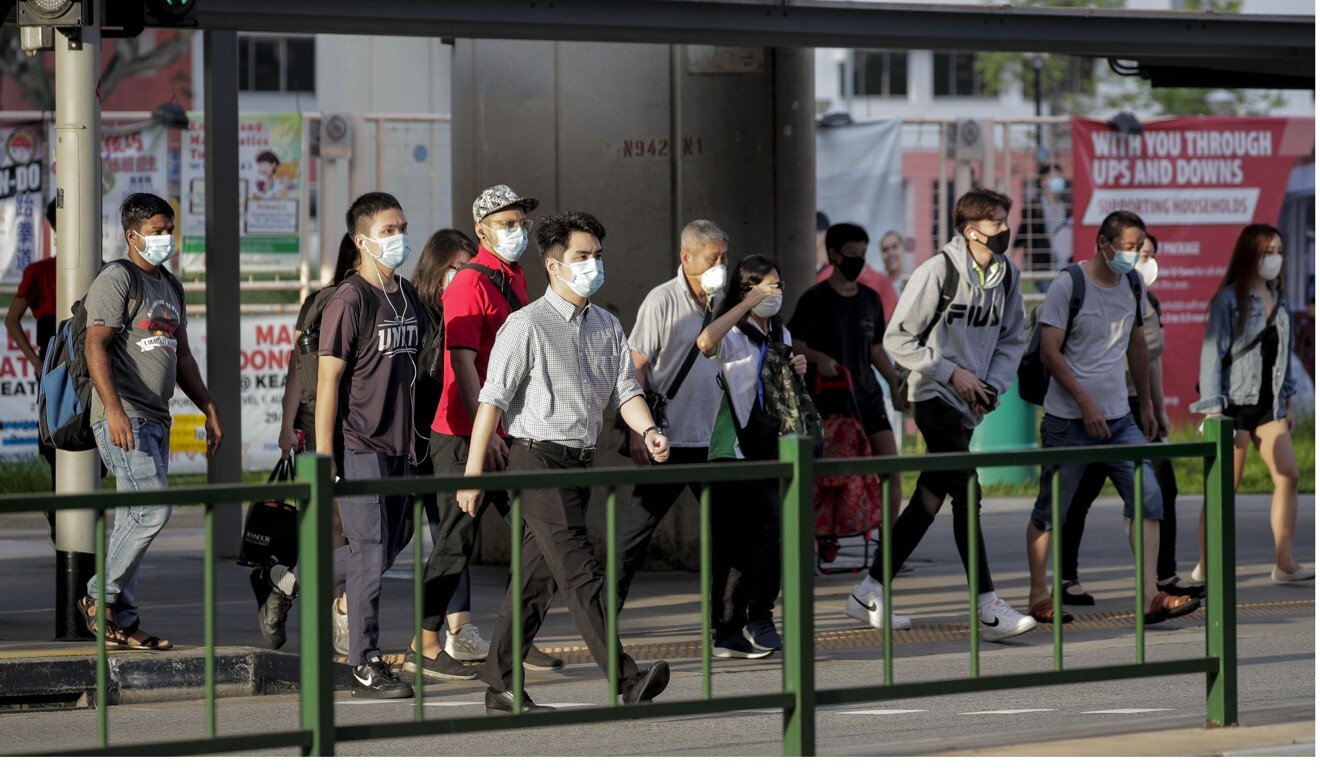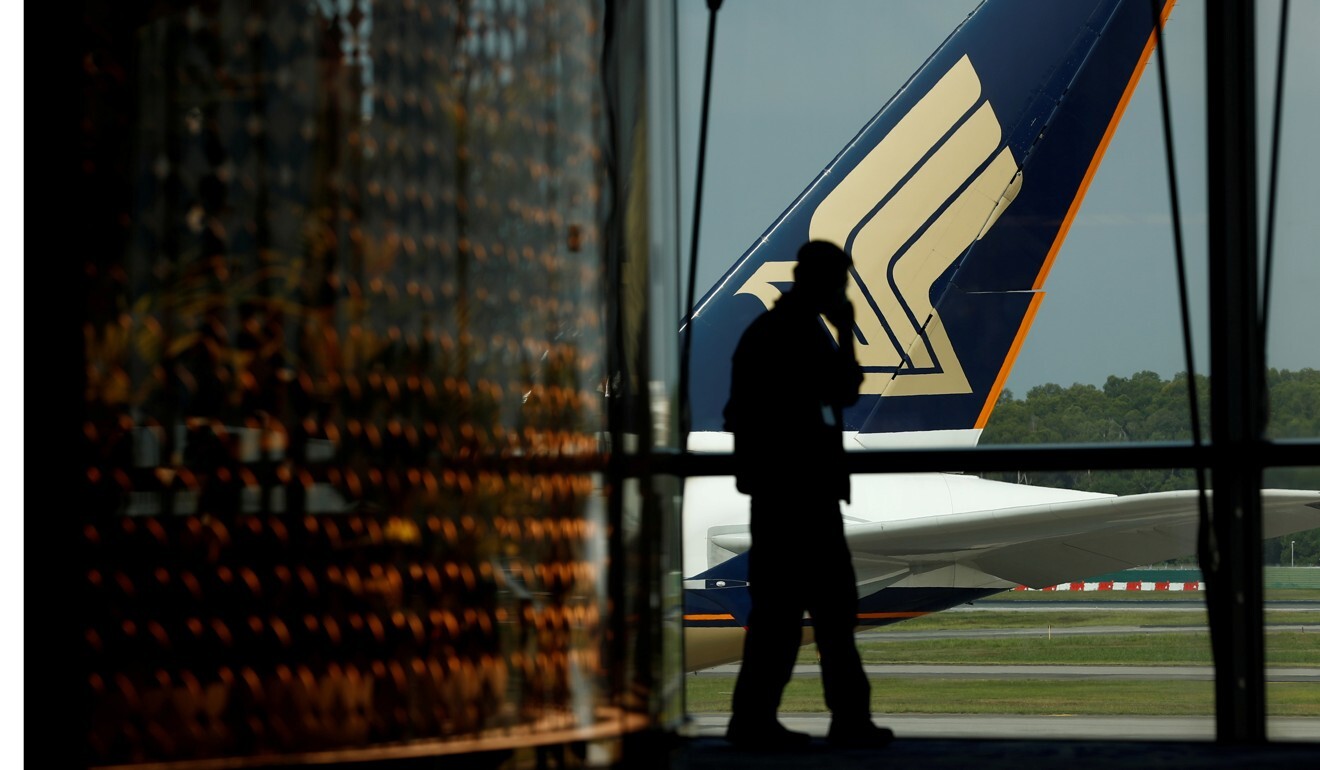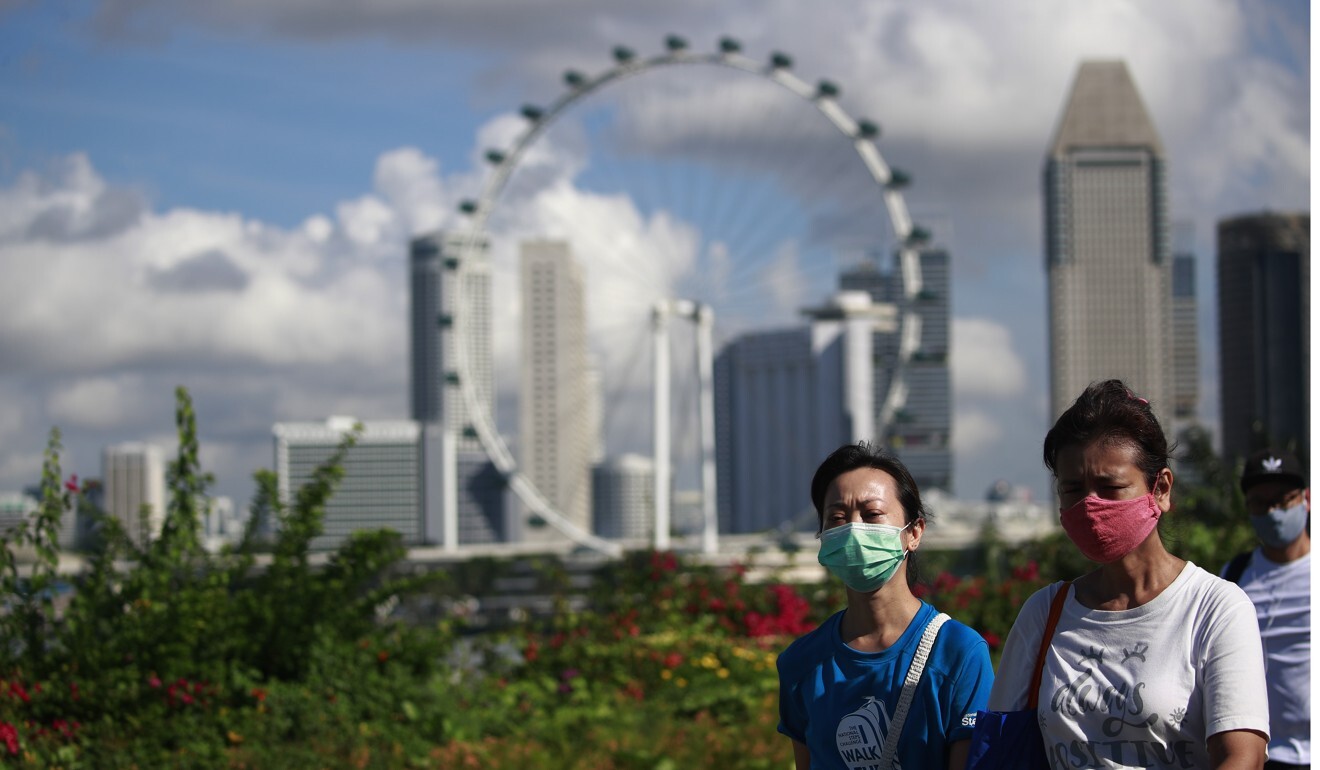
Excitement, nerves as Singapore starts phased reopening from coronavirus circuit breaker
- Pupils are returning to the classroom and some businesses are reopening as the circuit breaker is relaxed, and public transport is running more frequently
- But those who can work from home are still expected to do so and nail salons, bars, cinemas, retail shops and gyms will have to wait until phase two
“She’s looking forward to seeing friends in person and going back to teasing her classmates,” her mother, Michelle Tan, said.
This partial lockdown was relaxed on Tuesday as Singapore took its first steps to reopen, with pupils back in the classroom and 75 per cent of the economy resuming. Only graduating pupils can attend school every day, however. Others like Tan will rotate weekly between the classroom and continuing with home-based learning. Dental clinics, chiropractors and air conditioning servicing were among the businesses allowed to operate again.
Public transport also began running more frequently – during off-peak periods, trains arrive every five minutes compared to 10 minutes for the past few weeks. And the green and orange stickers plastered over alternate train and bus seats to enforce social distancing have been removed.

Commuters using the East-West line on Tuesday morning observed safe distancing by leaving alternate seats vacant. At the Raffles Place train station in downtown Singapore, the morning crowd was about 10 to 20 per cent larger than in recent weeks, according to a member of staff at a convenience store within the station.
“My morning crowd is coming back slowly,” she said as streams of office workers entered for their morning coffee fix.
Don Ho, 27, who was among those rushing to work, said he was wearing a button-down shirt for the first time in eight weeks and the reopening meant he had to wake up two hours earlier than usual.
“The feeling of meeting colleagues and having actual human interaction will be good,” he said.
But several banks decided to keep workers at home until the next phase of easing, unlike Hong Kong, where some financial institutions had up to half of their staff members return to the office. Bloomberg reported that the Monetary Authority of Singapore advised firms to keep staff on site well within 25 per cent, according to people with knowledge of the matter.

Communications manager Kai Ho, 29, and her husband have already planned a steamboat dinner at her parents’ home on Thursday, as two people from each household can now visit their parents or grandparents once a day. Visiting friends and dining at restaurants are still off-limits.
“We’ve had Zoom dinners, but I haven’t seen [my family] in person since mid-March,” Ho said.
Marriage ceremonies, funerals and wakes can now be held but with a maximum of 10 people attending. Places of worship are open for private visits by up to five households at once.

Congregational worship services, religious classes and cell group meetings conducted in person remain suspended in phase one.
Other countries have started to return to normal. In China, where the outbreak started, schools and workplaces have reopened. In parts of Australia, restaurants can now host 50 people instead of 10 and public attractions such as Sydney’s Taronga Zoo, art galleries, museums and libraries have reopened.
In the Philippines, traffic jams returned to Manila as people went back to work in packed cars, trains and buses, even though these were allowed to carry only a fraction of their capacity. Barber shops and beauty salons can reopen next week while schools will remain shut for another two weeks.
Singapore’s circuit breaker takes its toll on residents
In Japan, children in Tokyo returned to schools on Monday, and gyms, saunas and cinemas also opened after nearly two months under a loose lockdown.
In Britain, younger children headed back to schools after parks and beaches filled up over the past two weekends.
But not everyone is raring to go. R.S., who works in a bank and asked to be identified by her initials only, was unhappy about going back to the office and felt it was unnecessary. She joined a number of people on social media questioning why their companies had told them to return despite a government advisory that working from home should be the default.
“I’m dreading it,” she said. “Other banks like Citi also said there is no rush for them to bring their employees back to office so I don’t understand why my company is making us go back so early. The only downside of working from home is that we are unable to process physical documents, but I feel that this technological capability is something that the company needs to improve on.”

T. Lim, 33, who works in the hospitality industry, is still working from home. She has also chosen to keep her five-year-old daughter home from school for another week.
“She really wants to go back but I’m just afraid this week is high-risk, just in case people have been taking advantage of the end of the circuit breaker and going out more,” she said. “We’ll see how the numbers go. I’ll also observe to see how many of her classmates are going to school.”
Working from home is still encouraged where possible and many services – nail salons, bars, cinemas, retail shops and gyms – will resume operations in phase two, which is expected in July, or towards the end of June at the earliest.
In phase two, people will be able to gather, visit and eat out in groups of five. Phase three is when a new normal will emerge, with the resumption of social, cultural, religious and business gatherings or events tied to an as yet unannounced limit on capacity.

Singapore aims to establish more such “green lanes” or travel bubbles with New Zealand, Canada, South Korea and Australia. These countries plan to standardise protocols so there will be mutual assurance of health standards in terms of testing and contact tracing. Authorities said this reopening of travel will also be cautious, and initially available to business travellers only.

Meanwhile, the Singapore Tourism Board has set aside S$90 million (US$63 million) to support industry recovery efforts “when the time is right”. Its office in China is continuing to market the city state as a destination, chief executive Keith Tan said.
“Once there are signs of recovery, restarting our marketing efforts and bringing visitors back to Singapore will be our priority,” Tan said.
Chinese tourists, travel bubbles: how Asia can refloat travel industry
For Francis Ng, who owns House of Seafood, news of the travel lane is a relief. He has two outlets in China and has not been able to visit since the pandemic broke out. He is keen to see his staff and deliver items such as sauces which he cannot buy in the mainland. Although the corridor does not include Shenyang and Chengdu, where his outlets are located, he is hopeful more lanes will open soon.
Others, such as Yusuf Abdol Hamid, 35, are simply glad they can get on with their chores. The photographer, who is now working as a food delivery rider to make ends meet, has had to put off his air conditioner servicing for the past two months due to the circuit breaker.
“I’d prefer a full reopening so I can go back to photography work, but small victories I guess,” he said.


